Three Basins Threats
Download Full Report HereEarth Insight and global partners call attention to the expansion threats posed by fossil fuel, mining, and other industrial expansion in the world’s last intact remaining tropical forests in the basins of the Amazon, Congo, and Mekong-Borneo Southeast Asian regions.
- Nearly 20% of intact tropical forests in the three basins are now in active and potential oil and gas concessions.
- Nearly 25% of intact tropical forests in the Amazon and Congo basins are now in active or potential mining concessions.
- In Indonesia, nearly half of all nickel concessions, a major source for the EV industry overlap with natural forests.
- Over 200 million people, including a significant proportion of Indigenous and local communities, or about 20% of the population in the three basin regions, live within oil and gas blocks.
Earth Insight and global partners call attention to the expansion threats posed by fossil fuel, mining, and other industrial expansion in the world’s last intact remaining tropical forests in the basins of the Amazon, Congo, and Mekong-Borneo Southeast Asian regions.
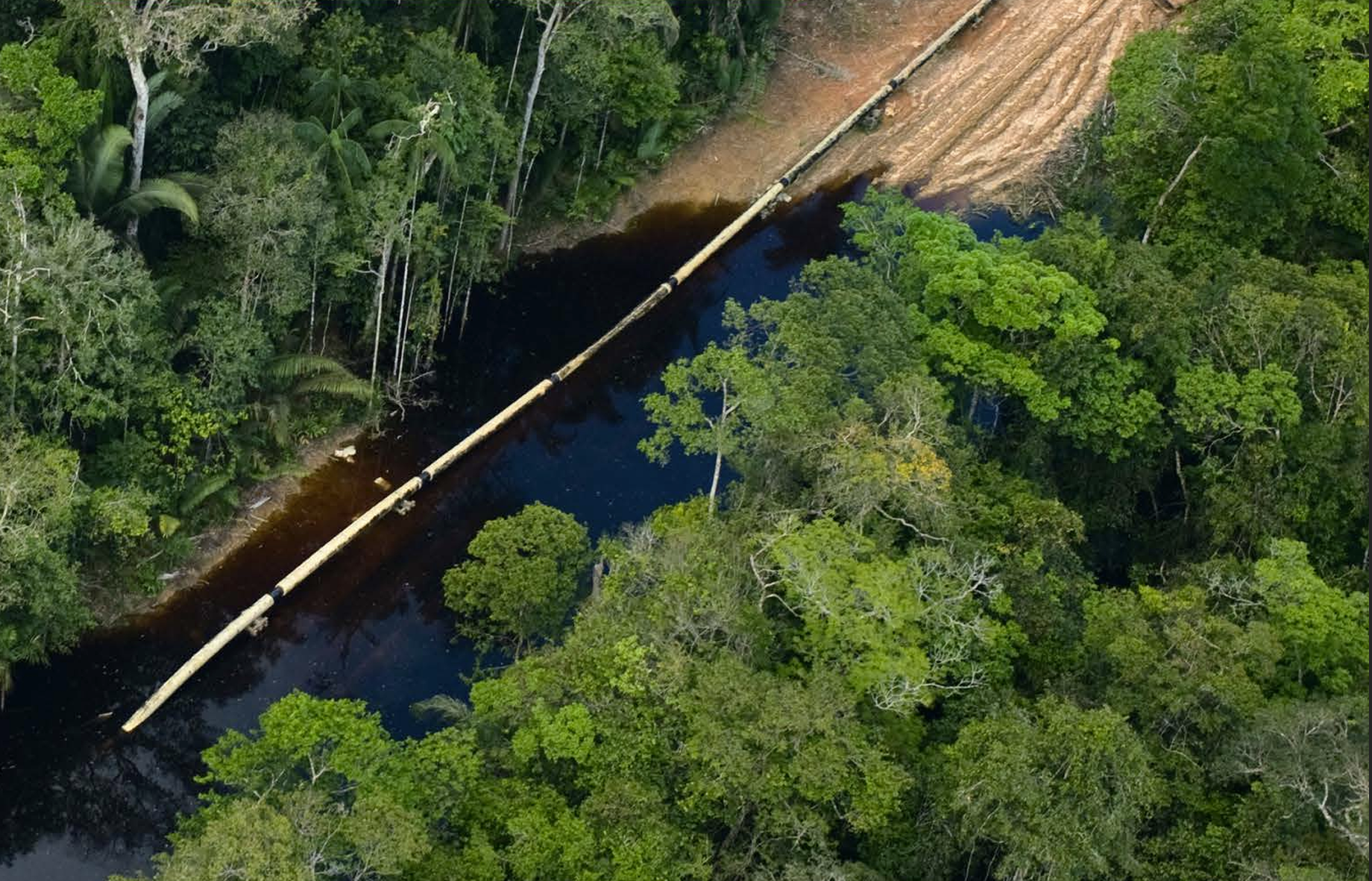
A pipeline being constructed in the Amazon rainforest. Image credit: Per-Anders Pettersson via Getty Images
These and other pressures are contributing factors to the staggering global tropical primary forest loss in 2022 which totaled 4.1 million hectares, or the equivalent of 11 football fields of forest disappearing every minute according to University of Maryland’s Global Land Analysis.
Explore basin by basin maps (see map gallery below) and analyses regarding oil, mining, and other concession overlap with intact tropical forests, Indigenous territories, and populated places (villages, communities, towns, etc.). As Indigenous and other land defenders face a continual onslaught of industrial and unregulated expansion into their territories and customary lands, rights violations and violence often follows and hundreds of distinct cultures and millions of people who have been stewarding the land for milenia are at risk.
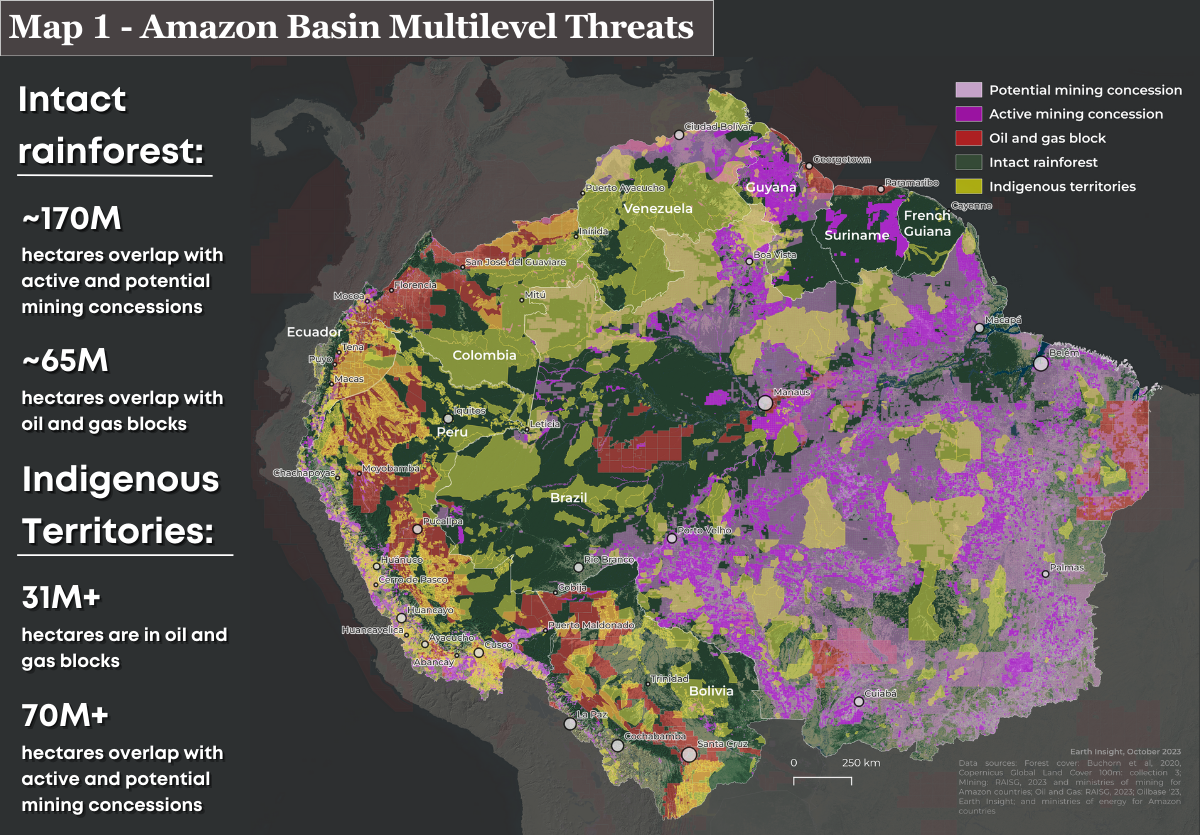
Amazon Basin:
- An estimated 65 million hectares or nearly 13% of undisturbed tropical forests now overlap with existing or planned oil and gas blocks in the Amazon Basin.
- More than 170 million hectares or more than 33% of undisturbed Tropical Moist Forests overlap with active and inactive mining concessions in the Amazon Basin
- Over 500 distinct Indigenous nationalities call the Amazon Basin home and more than 31 million hectares of Indigenous Territories are now in oil and gas blocks designated for production or exploration and more than 70 million hectares of Indigenous Territories overlap with active and inactive mining concessions
- More than 13,000 villages, towns, etc. — or more than 23% of populated places in Amazonia — are now in oil and gas production or exploration blocks and more than 16,000 populated places (villages, communities, towns, etc.) are located in active and inactive mining concessions
Industrial Expansion - A Driver of Violence Facing Indigenous Peoples and Local Communities
Forests and communities in all three basins face multiple threats from the expansion of fossil fuels, mining, logging, cattle and agribusiness. A holistic understanding of the cascade of deforestation and forest degradation needs to consider not only the proposed impact area of a project but all related changes, from infrastructure development and demographic pressures and migration, to forest fragmentation and biocultural erosion.
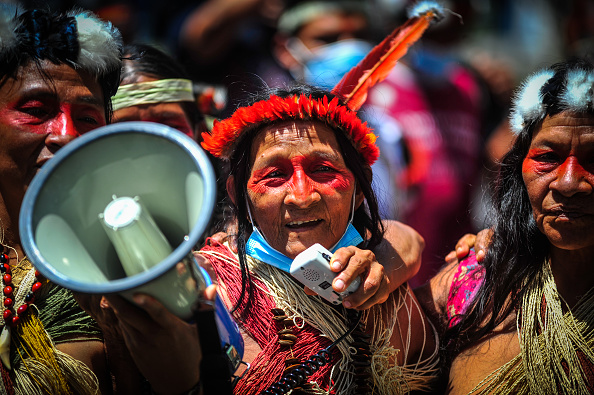
A woman from the Waorani community speaks via megaphone during a protest against new oil projects in the Amazon. Image credit: Juan Diego Montenegro/dpa via Getty Images
It is estimated that almost 60% of Indigenous peoples’ lands in 64 countries worldwide are either highly threatened (8.6 million km ) or moderately threatened (14.1 million km ) by industrial development expansion. Another study found that Indigenous peoples are involved in at least 34% of all documented environmental conflicts worldwide, with more than three-fourths of these caused by mining (24.7%), fossil fuels (20.8%), the agriculture, forestry, fisheries, and livestock (AFFL) sector (17.5%), and dams (15.2%). However, the AFFL sector caused the most land dispossession, livelihood loss, and environmental degradation.
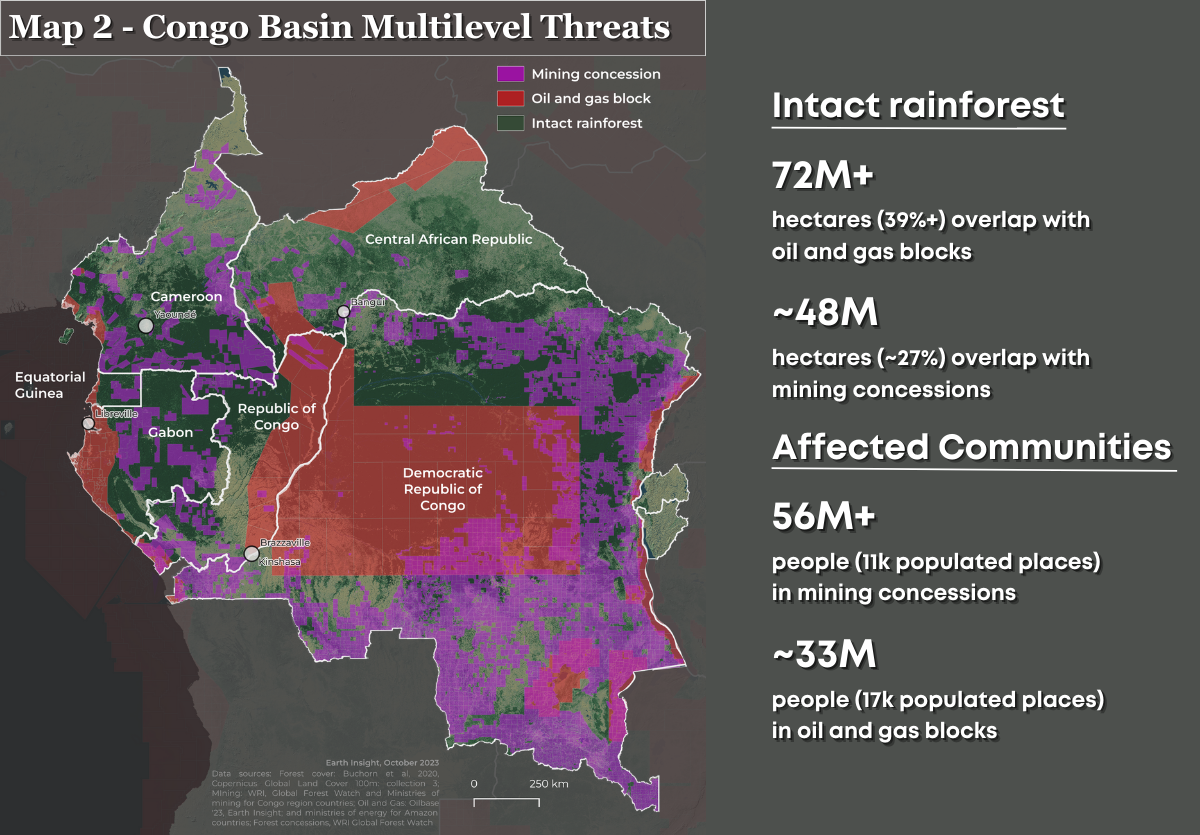
Congo Basin:
- More than 72 million hectares or more than 39% of undisturbed Tropical Moist Forests in the Congo Basin now overlap with oil and gas blocks
- Nearly 48 million hectares or nearly 27% of undisturbed Tropical Moist Forests overlap with mining concessions in the Congo basin
- Over 150 distinct ethnic groups call the Congo Basin region home and more than 17,000 populated places (villages, communities, towns, etc.) are now in oil and gas blocks and more than 11,000 populated places both inclusive of Indigenous and forest-dependent people are located in mining concessions in the Congo basin region
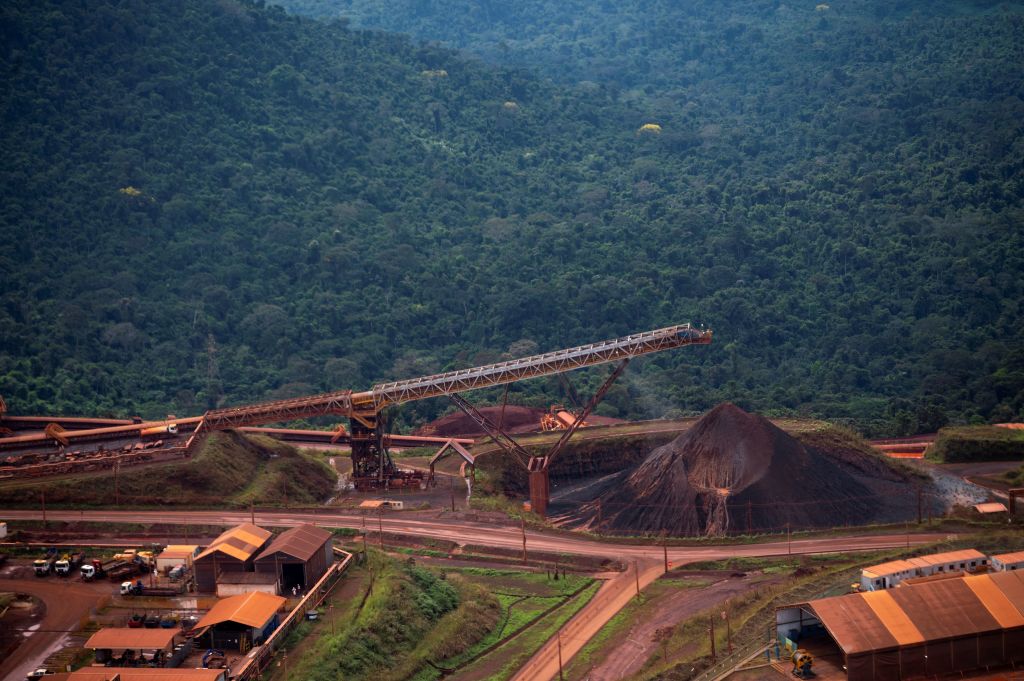
Aerial view showing the N4WS iron ore mine of the Brazilian mining company VALE, part of the Carajas Mining Complex, surrounded by Amazonia rainforest, municipality of Canaa dos Carajas, Para state, Brazil on May 17, 2023. Image credit: Mauro Pimentel/AFP via Getty Images
For the last five years, mining has posed the most danger to environmental defenders. For Indigenous peoples, resisting industrial expansion projects can be tantamount to a death sentence. An analysis of 3081 environmental conflicts over development projects reported in the Environmental Justice Atlas database indicates that mining and land conflicts pose the highest risk for assassinations, physical violence, and criminalization.
The death toll more than doubles for Indigenous environmental defenders. As investments switch to transition minerals, until governments establish legal enforcement – and until supply chains are regulated, traceable and actually accountable – this trend could mean a far more perilous time for Indigenous groups standing for the survival of their homes and the ecosystems that humanity needs to preserve for our shared future.
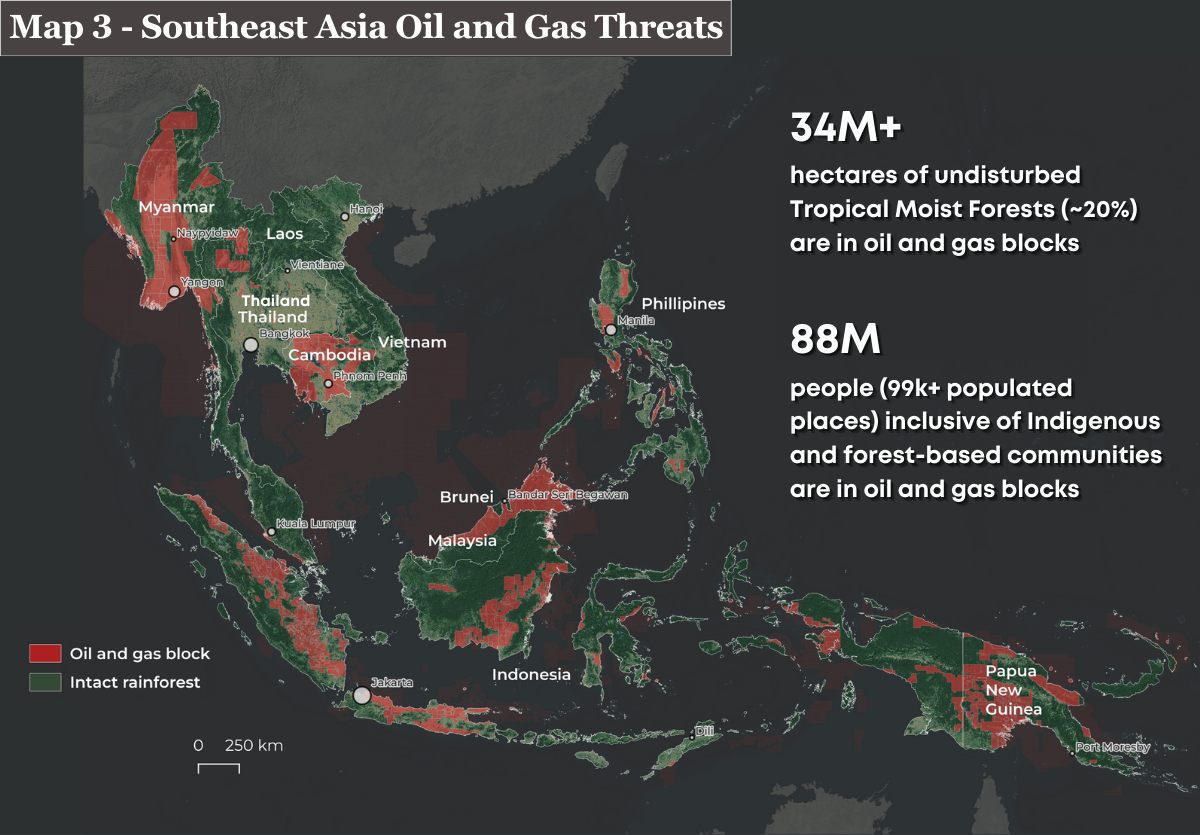
Southeast Asia:
- In Southeast Asia, more than 34.8 million hectares or nearly 20% of undisturbed Tropical Moist Forests are in oil and gas blocks designated for production or exploration
- In Indonesia, more than 99,000 populated places (villages, communities, towns, etc.) are located in oil and gas blocks and over 3,000 populated places are located in mining concessions — both overlap areas inclusive of a high degree of Indigenous and forest-based peoples
- In Indonesia, 53% of natural forests are vulnerable to being granted for varying extractive concessions (palm oil, mining, logging, forests for energy, etc.) by the government
- In Indonesia, nearly half of nickel mining concessions (primarily for the EV sector) overlap with natural forests and a fivefold risk of deforestation is possible if nickel mining permits expand to cover the full deposit area


%20(1).png?auto=compress%2Cformat)

%20(1).jpeg?auto=compress%2Cformat)